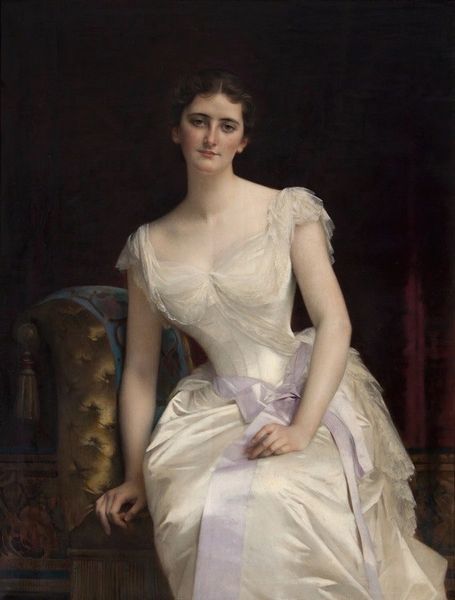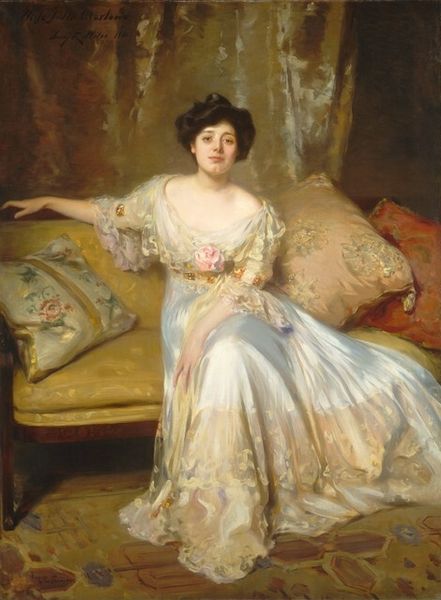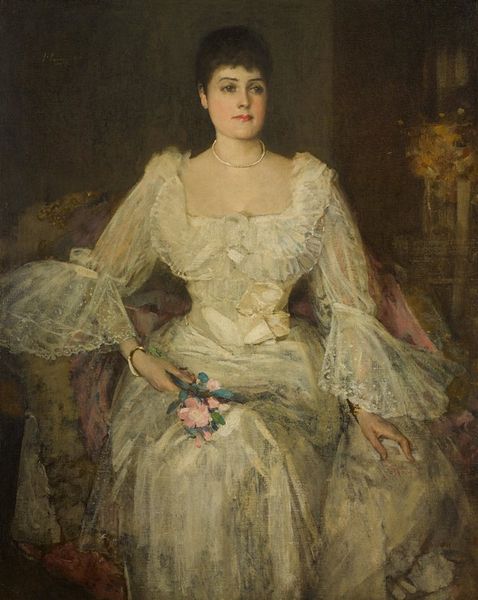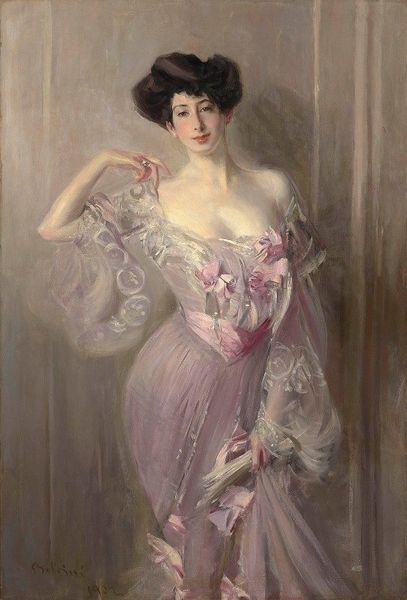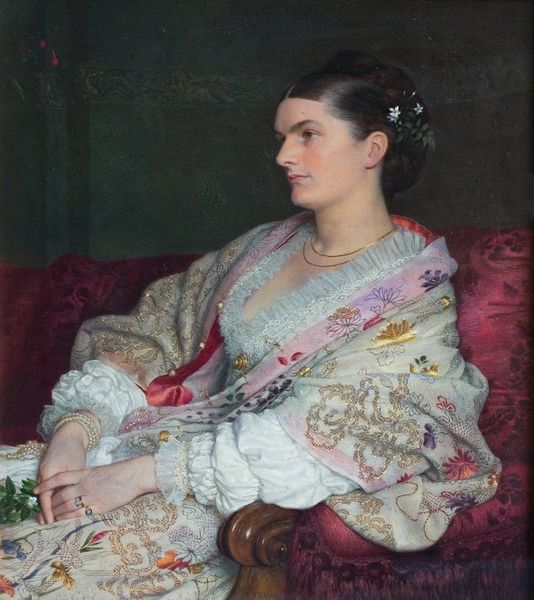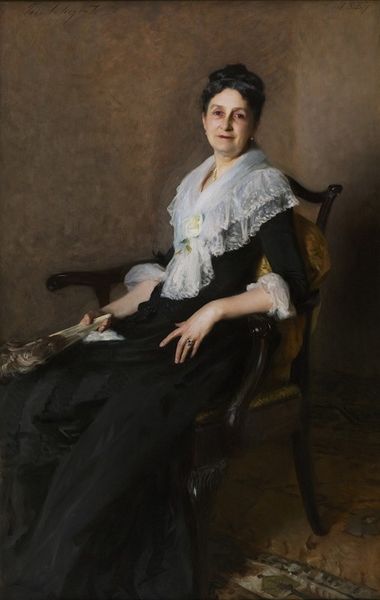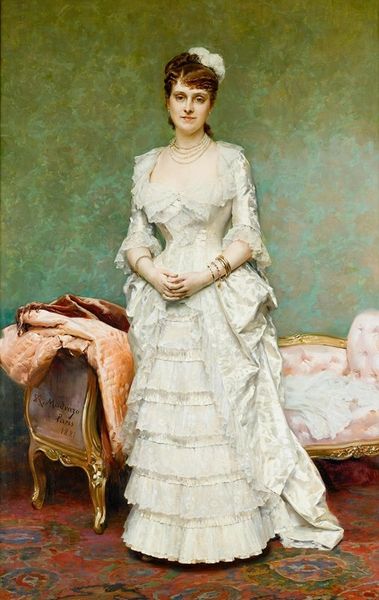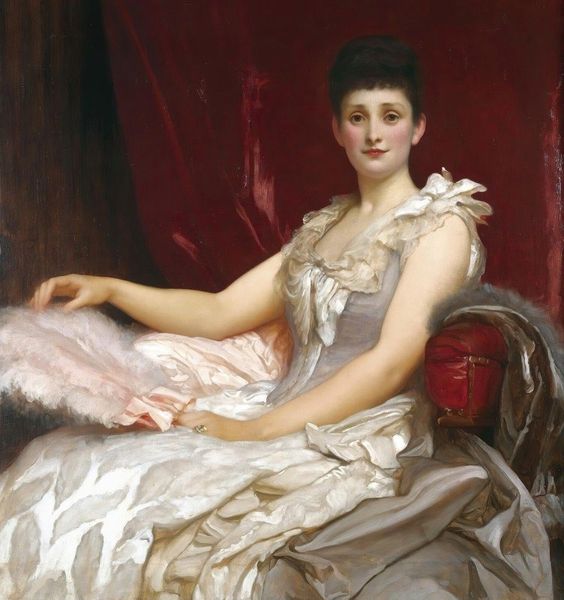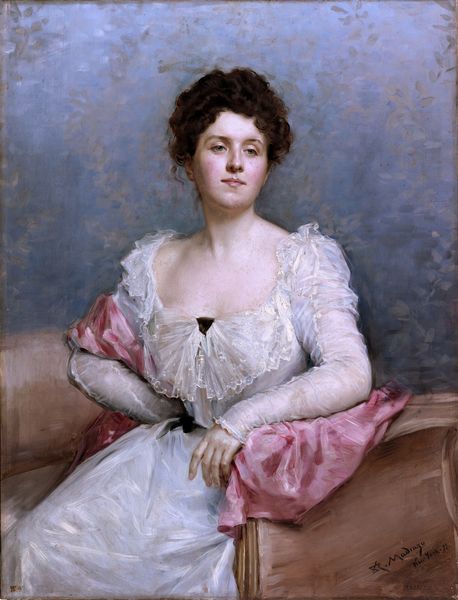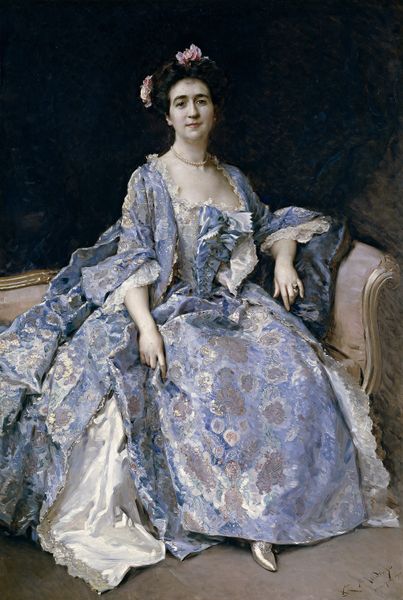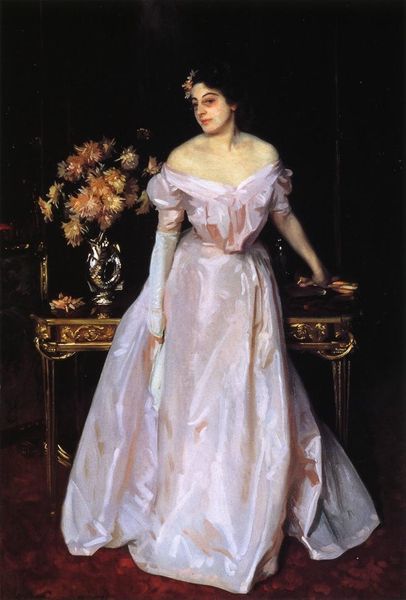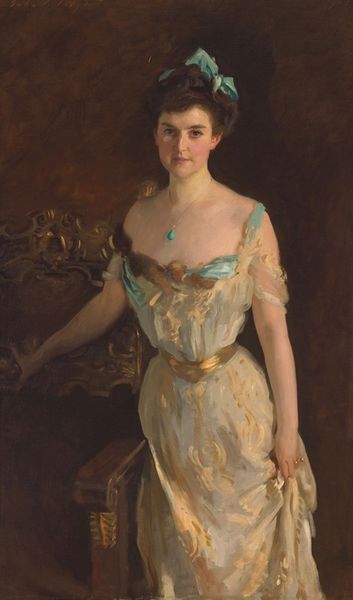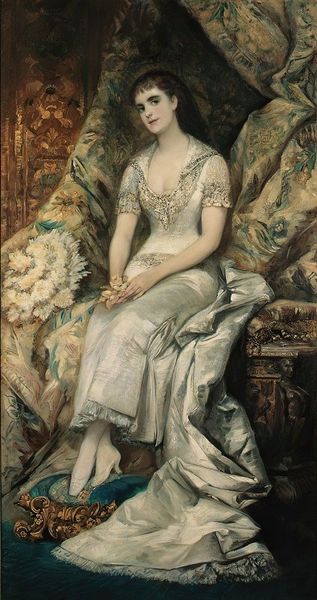
Copyright: Public Domain: Artvee
Curator: This is John Singer Sargent’s "Portrait of Lady Agnew of Lochnaw," an oil on canvas completed in 1892. Editor: She looks almost ethereally posed, like an untouchable icon gazing down from above with incredible coolness and grace. Curator: Lady Agnew, born Gertrude Vernon, was indeed a prominent socialite. Sargent’s work came at a pivotal point in her life. She commissioned the portrait to re-establish her social position after recovering from a severe illness; in that sense it can be considered an act of carefully constructed self-fashioning. Editor: It's interesting that you use the phrase 'self-fashioning'. Her very posture is compelling. See how she leans slightly forward, but also manages to be in repose; the almost disengaged yet present look in her eyes; these are carefully calculated gestures that carry a cultural significance for the upper classes. And she’s practically enthroned, that opulent chair framing her. It evokes not just status, but also perhaps a sense of confinement within societal expectations. Curator: I agree that the chair is fascinating. Sargent apparently specifically chose this French rococo revival bergère for the portrait. Beyond mere visual appeal, he actively constructed and complicated Lady Agnew's identity through symbolic association. What is the symbolic resonance of the color selection, especially with the focus on light? Editor: I note how her pale lavender sash seems to echo the pastel shades of the flowers behind her. The luminosity almost suggests a spiritual aura – she seems like an apparition, someone powerful yet ephemeral, an interesting meditation on gender, wealth, and beauty as tools of social maneuvering. Curator: Indeed, Sargent paints her as both an individual and as a symbol of an era on the brink of transformation, so it offers us more than a snapshot of a society lady. We are able to explore an intersectional perspective encompassing social expectations, the artist’s intentions, and Gertrude Vernon’s aspirations. Editor: Considering our discussion, one walks away from this work having examined an archetype as much as a woman. The layers of symbols Sargent weaves into the scene challenge our perception of who Lady Agnew was beyond the oil and canvas, beyond name and social stature.
Comments
No comments
Be the first to comment and join the conversation on the ultimate creative platform.
